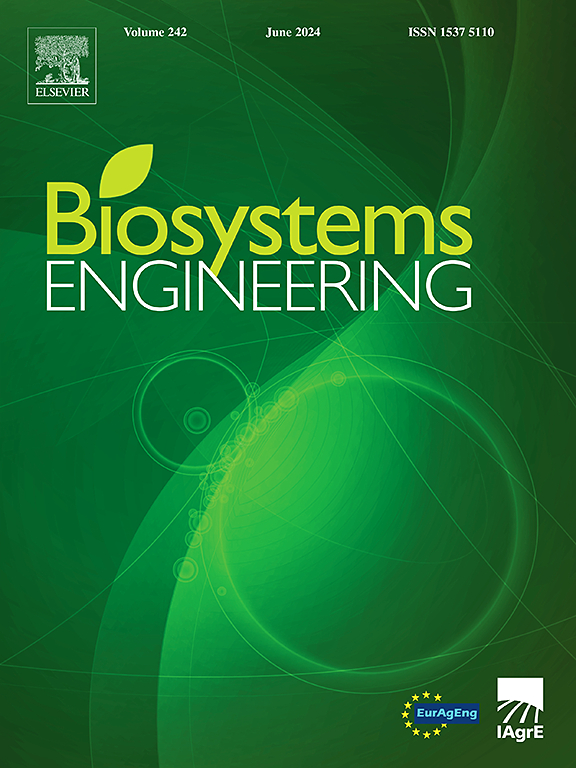Recognition in the early stage of powdery mildew damage for cucurbits plants using spectral signatures
IF 4.4
1区 农林科学
Q1 AGRICULTURAL ENGINEERING
引用次数: 0
Abstract
One of the most significant diseases affecting cucurbit plants is powdery mildew, which causes substantial yield losses in both greenhouses and field crops, especially during the winter and summer periods. Therefore, early diagnosis and detection are essential for effective pathogen control. An advanced, non-invasive method was developed for remotely sensing this fungal disease and assessing damage levels using spectral reflectance. The primary objective of this study is to detect the onset of the disease before the first visible symptoms appear on the leaves through the use of vegetation indices. To achieve this, statistical analyses and multiple comparison tests were employed for feature selection, in combination with machine learning algorithms, such as a Support Vector Machine. The results demonstrated high reliability in distinguishing between healthy and infected cucurbit leaves with powdery mildew. By calculating vegetation indices (VIs), seven optimal features were identified, enabling the recognition of three damage levels with 98% accuracy and a Cohen's coefficient of up to 0.96. Spectral reflectance successfully differentiated powdery mildew damage levels in cucurbit plants, suggesting that this method could be recommended for crops with similar characteristics.
利用光谱特征识别瓜类植物白粉病的早期危害
影响葫芦植物的最重要的疾病之一是白粉病,它在温室和大田作物中造成大量产量损失,特别是在冬季和夏季。因此,早期诊断和检测对有效控制病原菌至关重要。开发了一种先进的非侵入性方法,用于遥感这种真菌疾病并利用光谱反射率评估损害程度。本研究的主要目的是通过使用植被指数在叶子上出现第一个明显症状之前检测疾病的发作。为了实现这一目标,统计分析和多个比较测试被用于特征选择,并结合机器学习算法,如支持向量机。结果表明,该方法在区分健康和感染白粉病的葫芦叶片方面具有较高的可靠性。通过计算植被指数(VIs),确定了7个最优特征,使识别3个损害级别的准确率达到98%,科恩κ系数高达0.96。光谱反射法成功地区分了瓜类植物白粉病的危害程度,表明该方法可以推荐用于具有相似特征的作物。
本文章由计算机程序翻译,如有差异,请以英文原文为准。
求助全文
约1分钟内获得全文
求助全文
来源期刊

Biosystems Engineering
农林科学-农业工程
CiteScore
10.60
自引率
7.80%
发文量
239
审稿时长
53 days
期刊介绍:
Biosystems Engineering publishes research in engineering and the physical sciences that represent advances in understanding or modelling of the performance of biological systems for sustainable developments in land use and the environment, agriculture and amenity, bioproduction processes and the food chain. The subject matter of the journal reflects the wide range and interdisciplinary nature of research in engineering for biological systems.
 求助内容:
求助内容: 应助结果提醒方式:
应助结果提醒方式:


